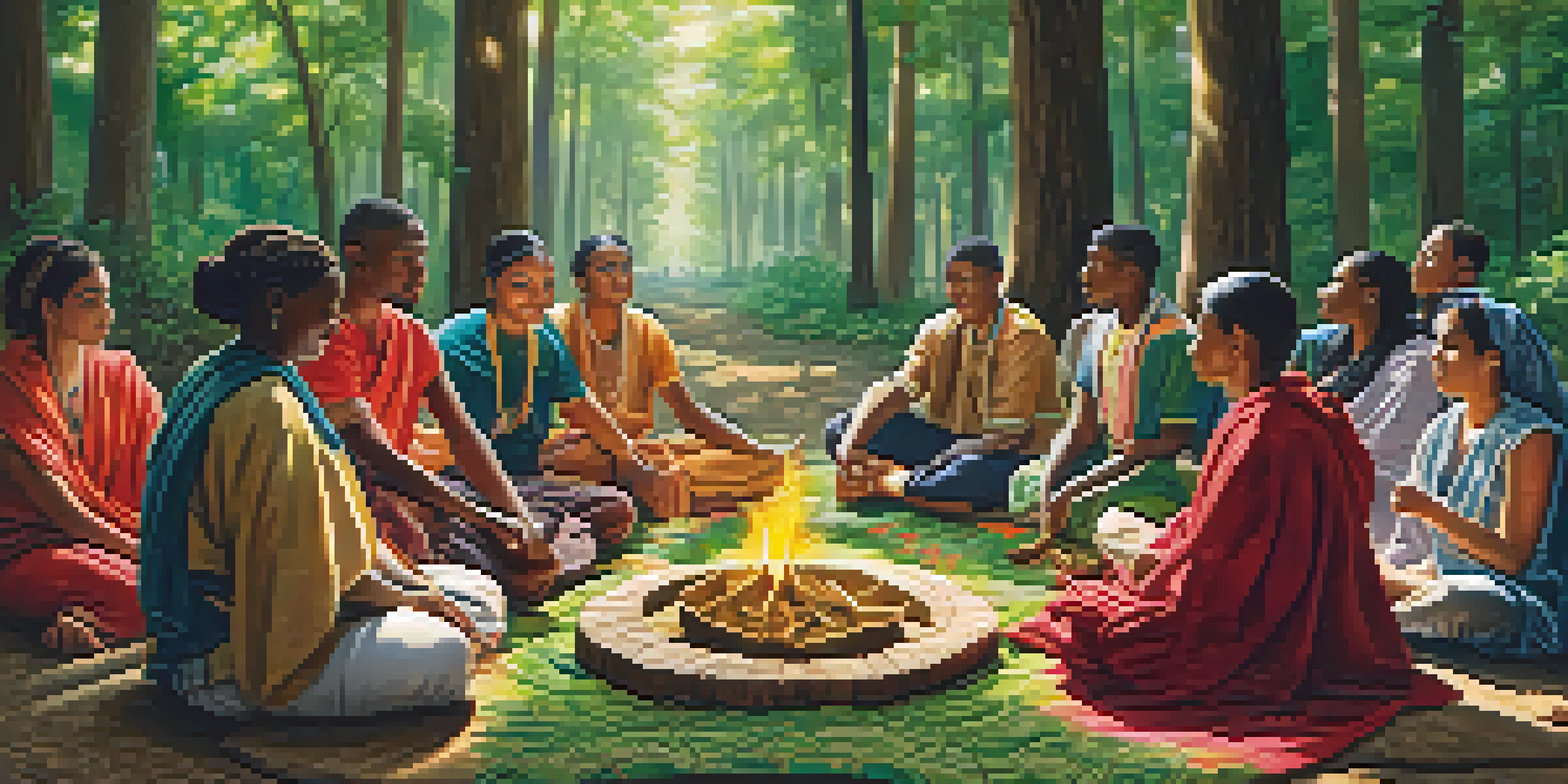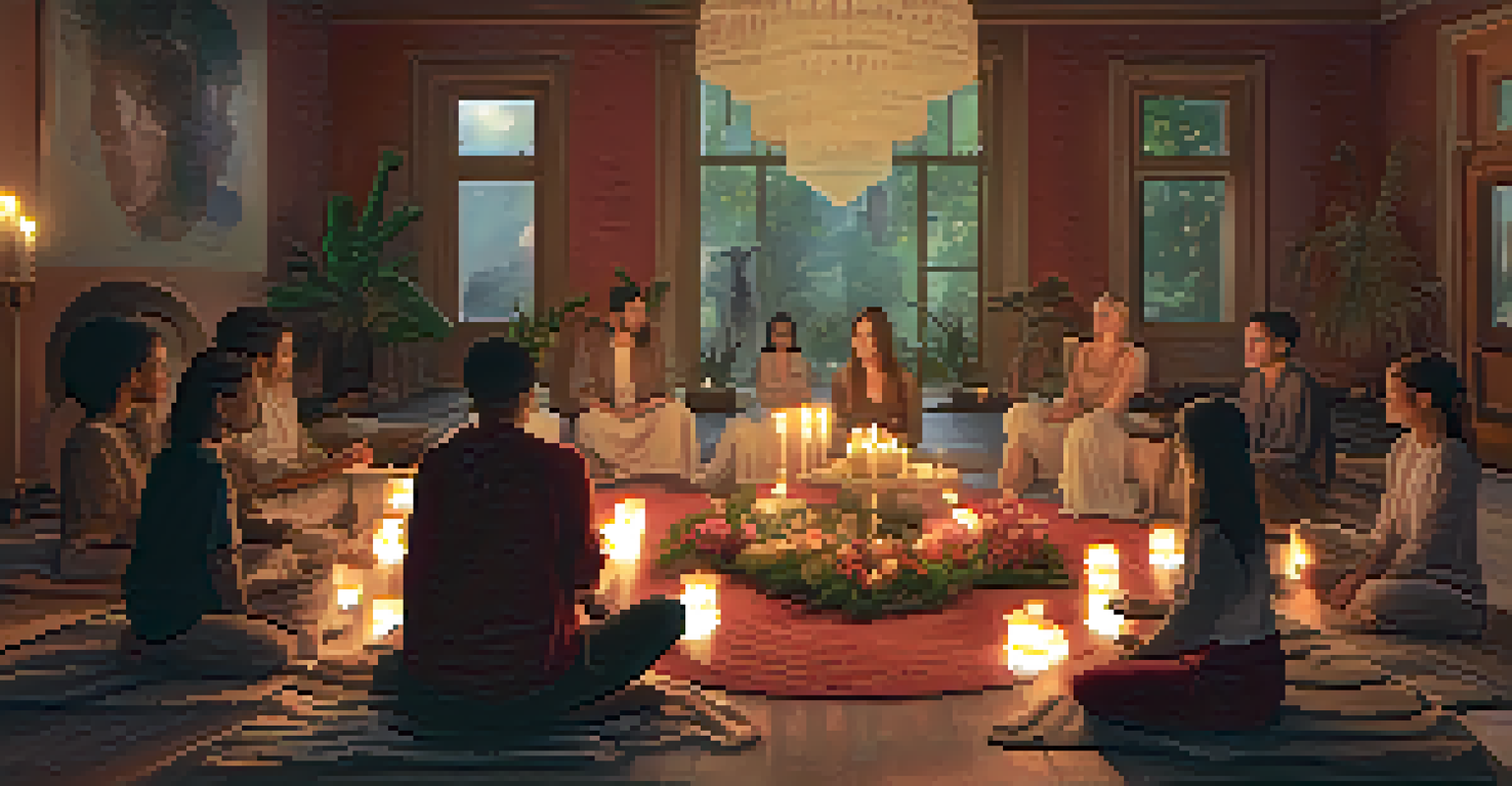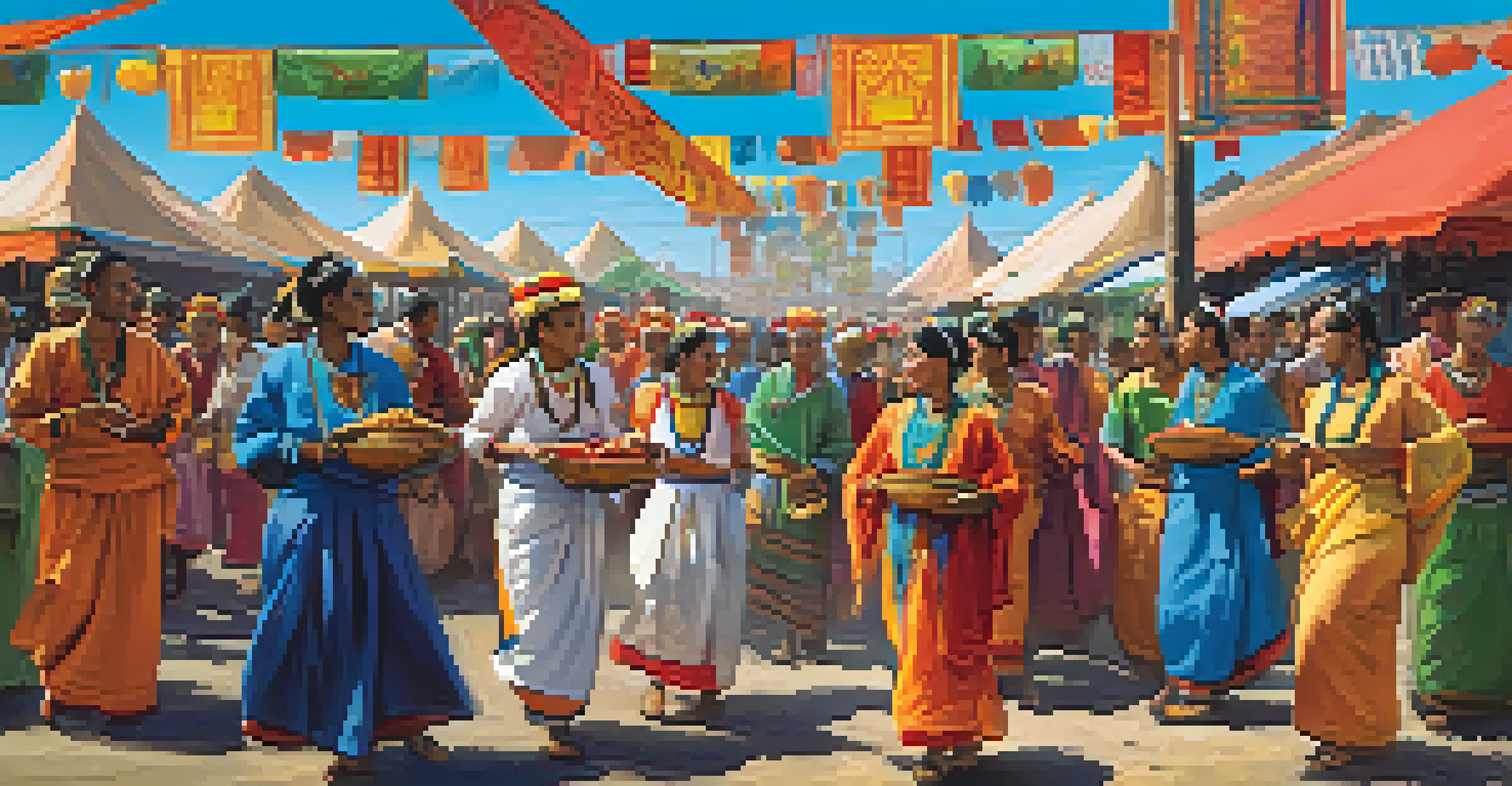Rituals and Hallucinogens: Fostering Community Engagement

Understanding the Role of Rituals in Communities
Rituals have been an integral part of human culture for centuries, serving as a way to foster community connections. They often create shared experiences that bring individuals together, whether through celebrations, mourning, or rites of passage. These communal activities help establish a sense of belonging, allowing members to feel connected to something larger than themselves.
Rituals are the formulas by which harmony is restored.
The beauty of rituals lies in their ability to unite diverse groups under a common purpose or emotion. For instance, consider a wedding ceremony that blends traditions from different cultures; it not only honors the couple but also celebrates their families and communities. This blending of practices can create a rich tapestry of shared memories and mutual respect.
In the context of hallucinogens, rituals can enhance these experiences, leading to profound connections among participants. When individuals come together to engage in a ritual involving hallucinogens, they often experience a heightened sense of empathy and understanding, which can deepen community bonds.
The Historical Context of Hallucinogens in Rituals
Hallucinogens have been used in various cultures for thousands of years, often within the framework of spiritual or healing rituals. For example, indigenous tribes in the Amazon have long used ayahuasca as a means of connecting with the spiritual world and fostering communal ties. These rituals not only facilitate personal revelations but also reinforce social networks and cultural identity.

In many instances, these substances are seen as sacred tools that provide insights into the self and the universe. By participating in these rituals, individuals can share their experiences, which can lead to a collective understanding and support within the community. This shared journey can be transformative, not just for individuals but for the group as a whole.
Rituals Foster Community Connections
Rituals create shared experiences that enhance bonds among community members, providing a sense of belonging.
Moreover, the communal aspect of these rituals emphasizes the importance of shared experiences in building trust and solidarity. This is crucial in fostering a sense of belonging and support, especially in times of change or uncertainty.
The Modern Revival of Rituals and Hallucinogens
In recent years, there has been a resurgence of interest in both rituals and hallucinogens, particularly as people seek deeper connections in our increasingly fragmented society. Many are turning to organized retreats and ceremonies that incorporate these elements, aiming to cultivate community and personal growth. This revival showcases a growing recognition of the importance of collective experiences for mental and emotional well-being.
We are all connected; to each other, biologically. To the earth, chemically. To the rest of the universe, atomically.
These modern ceremonies often draw inspiration from traditional practices while adapting to contemporary values and lifestyles. Participants frequently report feelings of unity and shared purpose, illuminating the profound impact of these experiences on community dynamics. As more individuals engage in these practices, they contribute to a culture that values connection and understanding.
In essence, this revival serves as a reminder of the timeless human desire for community, and how rituals and hallucinogens can fulfill that need. The blending of ancient wisdom with modern sensibilities can create powerful environments for personal and collective transformation.
Community Engagement through Shared Experiences
Shared experiences, especially those facilitated through rituals and hallucinogens, can significantly enhance community engagement. When individuals come together to partake in these activities, they often leave behind their everyday concerns, allowing them to connect on a deeper emotional level. This bonding experience can lead to stronger relationships and a more cohesive community.
For many, these experiences provide an opportunity to explore their inner selves while fostering empathy towards others. As participants share their thoughts and feelings during and after these rituals, they create an open dialogue that can bridge gaps between differing perspectives. This dialogue is essential in nurturing an inclusive community where everyone feels valued and heard.
Hallucinogens Enhance Group Dynamics
The use of hallucinogens in rituals can deepen empathy and understanding, strengthening community ties.
Furthermore, the act of engaging in rituals together often creates lasting memories that individuals cherish and reflect upon. Over time, these shared moments can solidify community ties, encouraging ongoing participation and commitment to communal values and objectives.
The Therapeutic Benefits of Rituals and Hallucinogens
Beyond their social implications, rituals and hallucinogens also hold therapeutic potential for individuals and communities alike. Research has shown that certain hallucinogens can facilitate emotional release and healing, allowing participants to confront personal challenges in a supportive environment. This therapeutic aspect can be particularly beneficial in community settings where collective healing is needed.
Rituals can serve as a framework for processing grief, trauma, or life transitions, providing individuals with a sense of purpose and direction. By participating in these transformative experiences, community members often find solace in shared struggles and triumphs, reinforcing their bonds and collective resilience.
Ultimately, the therapeutic benefits of these practices can extend beyond individual healing, fostering a healthier, more connected community. By prioritizing mental and emotional well-being through rituals and hallucinogens, communities can cultivate an environment of support and understanding.
Challenges and Considerations in the Practice
While the use of rituals and hallucinogens can foster community engagement, it is essential to approach these practices with care and respect. Misunderstandings or misuse of hallucinogens can lead to negative consequences, both for individuals and the community as a whole. Therefore, ensuring that these experiences are conducted in safe and informed environments is crucial.
Moreover, cultural appropriation is a significant concern when integrating traditional rituals into modern practices. It is essential to honor the origins and significance of these rituals, ensuring that they are practiced respectfully and authentically. Engaging with cultural experts and communities can help navigate these complexities and promote genuine understanding.
Therapeutic Benefits of Shared Rituals
Participating in rituals can facilitate emotional healing and resilience, benefiting both individuals and the community.
Lastly, ongoing education and open discussions about the benefits and risks of hallucinogens can empower communities to make informed choices. By fostering a culture of safety and awareness, communities can reap the rewards of these practices while minimizing potential harm.
Looking Ahead: The Future of Rituals and Hallucinogens
As society continues to evolve, the role of rituals and hallucinogens in fostering community engagement is likely to expand. With increasing interest in mental health and well-being, more people are recognizing the value of shared experiences. This trend may lead to a growing acceptance of these practices as legitimate tools for personal and communal growth.
Furthermore, as research into the therapeutic benefits of hallucinogens progresses, we may see a shift in public perception. This could lead to more inclusive and diverse communities that embrace these practices as part of their cultural identities. As awareness grows, the potential for positive transformation within communities becomes even more promising.

In conclusion, the future of rituals and hallucinogens holds immense potential for fostering connection and understanding within communities. By embracing these practices thoughtfully, we can cultivate environments that promote healing, empathy, and collective growth.